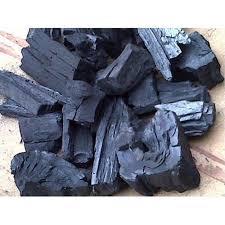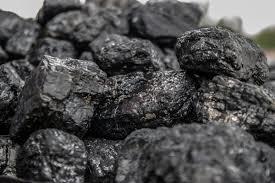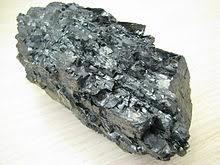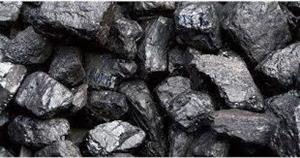SHREE BALAJI ENTERPRISES
Featured Products
Highest quality standards are achieved through the implementations of latest technology, decades of experience and everlasting moral values , which have helped us to retain our customers as well as multiply them.
Welcome to SHREE BALAJI ENTERPRISES
Charcoal
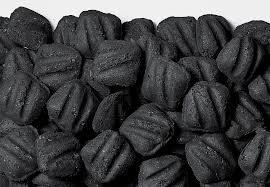
An application of wood charcoal was as a constituent of gunpowder. It was also used in metallurgical operations as a reducing agent, but its application has been diminished by the introduction of coke, anthracite smalls, etc. For example, charcoal may be used to smelt a variety of metals from aluminum to copper as it burns at the necessary temperature: 1,100 °C (2,010 °F). A limited quantity is made up into the form of drawing crayons; but the greatest amount is used as a fuel, which burns hotter and cleaner than wood. Charcoal is often used by blacksmiths, for cooking, and for other industrial applications.
Industrial fuel
A charcoal powered bus being "fired up" in post war Japan (late 1940s)
Historically, charcoal was used in great quantities for smelting iron in bloomeries and later blast furnaces and finery forges. This use was replaced by coke during the Industrial Revolution. For this purpose, charcoal in England was measured in dozens (or loads) consisting of 12 sacks or shems or seams, each of 8 bushels.
Automotive fuel
In times of scarce petroleum, automobiles and even buses have been converted to burn wood gas (gas mixture containing primarily carbon monoxide) released by burning charcoal or wood in a wood gas generator. In 1931 Tang Zhongming developed an automobile powered by charcoal, and these cars were popular in China until the 1950s. In occupied France during World War II, wood and wood charcoal production for such vehicles (called gazogènes) increased from pre-war figures of approximately fifty thousand tons a year to almost half a million tons in 1943.
Purification and Filtration
Charcoal may be activated to increase its effectiveness as a filter. Activated charcoal readily adsorbs a wide range of organic compounds dissolved or suspended in gases and liquids. Charcoal is often used to filter water to remove bacteria and undesired tastes. In certain industrial process, such as the purification of sucrose from cane sugar, impurities cause an undesirable color, which can be removed with activated charcoal. It is also used to absorb odors and toxins in gasses, such as air. One striking example is the use of charcoal to remove the smell of marijuana plants in small-scale residential settings. Charcoal filters are also used in some types of gas masks. The medical use of activated charcoal is mainly the adsorption of poisons, especially in the case of suicide attempts in which the patient has ingested a large amount of a drug. Activated charcoal is available without a prescription, so it is used for a variety of health-related applications. For example, it is often used to reduce discomfort (and embarrassment) due to excessive gas in the digestive tract.
Animal charcoal or bone black is the carbonaceous residue obtained by the dry distillation of bones. It contains only about 10% carbon, the remainder being calcium and magnesium phosphates (80%) and other inorganic material originally present in the bones. It is generally manufactured from the residues obtained in the glue and gelatin industries. Its decolorizing power was applied in 1812 by Derosne to the clarification of the syrups obtained in sugar refining; but its use in this direction has now greatly diminished, owing to the introduction of more active and easily managed reagents. It is still used to some extent in laboratory practice. The decolorizing power is not permanent, becoming lost after using for some time; it may be revived, however, by washing and reheating. Wood charcoal also to some extent removes coloring material from solutions, but animal charcoal is generally more effective.
Cooking fuel
Charcoal briquettes are widely used for outdoor grilling and barbecues in backyards and on camping trips.
In many non-industrialized countries, charcoal is used for everyday cooking by a large portion of the population. This is potentially a serious health problem when used indoors since carbon monoxide (CO) is a combustion product.
Art
Four sticks of vine charcoal and four sticks of compressed charcoal.
Two charcoal pencils in paper sheaths designed to be unwrapped as the pencil is used and two charcoal pencils in wooden sheaths.
Charcoal is used in art for drawing, making rough sketches in painting and is one of the possible media for making a parsemage. It must usually be preserved by the application of a fixative. Artists generally utilize charcoal in three forms:
Vine charcoal is created by burning sticks of wood (usually willow or linden/Tilia) into soft, medium, and hard consistencies.
Compressed charcoal charcoal powder mixed with gum binder compressed into round or square sticks. The amount of binder determines the hardness of the stick. Compressed charcoal is used in charcoal pencils.
Powdered charcoal is often used to "tone" or cover large sections of a drawing surface. Drawing over the toned areas will darken it further, but the artist can also lighten (or completely erase) within the toned area to create lighter tones.
Horticulture
One additional use of charcoal rediscovered recently is in horticulture. Although American gardeners have been using charcoal for a short while, research on Terra preta soils in the Amazon has found the widespread use of biochar by pre-Columbian natives to turn otherwise unproductive soil into very rich soil. The technique may find modern application, both to improve soils and as a means of carbon sequestration.
Medicine
Charcoal was consumed in the past as dietary supplement for gastric problems in the form of charcoal biscuits. Now it can be consumed in tablet, capsule or powder form, for digestive benefits. Charcoal absorbs gases and toxins to help heartburn, flatulence or indigestion.
Red colobus monkeys in Africa have been observed eating charcoal for the purposes of self-medication. Their leafy diets contain high levels of cyanide, which may lead to indigestion. So they learned to consume charcoal, which absorbs the cyanide and relieves indigestion. This knowledge about supplementing their diet is transmitted from mother to infant.
Also, see Activated charcoal, medicinal applications.
Smoking
Special charcoals are used in the smoking of the Hookah. Lit coals are placed on top of foil, which is placed over the bowl of tobacco, and through indirect heat "cook" the tobacco to a temperature that produces smoke, but does not burn.
Our Vision
* To embrace new technologies and methods. * To give unsurpassed products and services to the clients. * To constantly look for improvement and changes.




